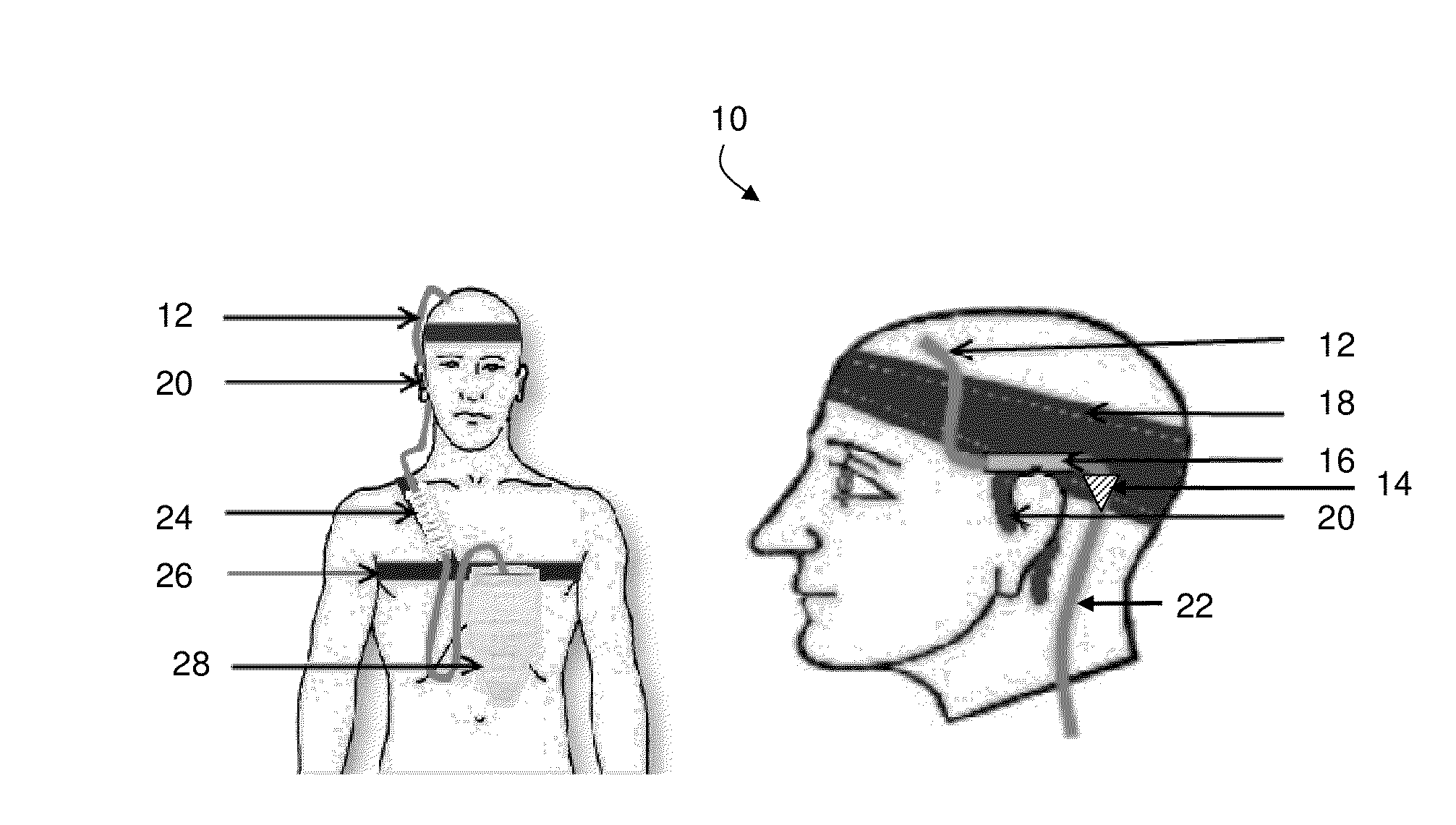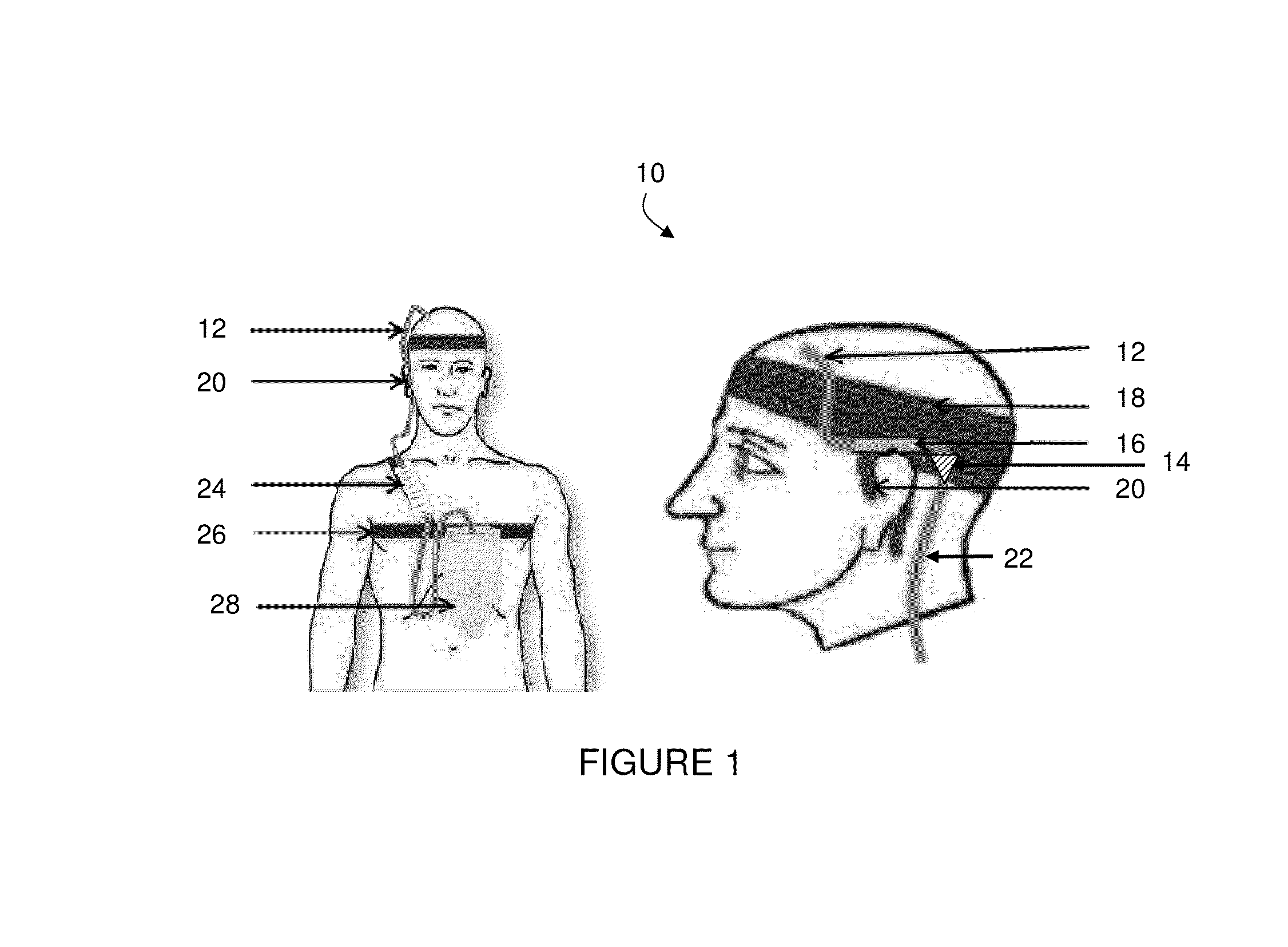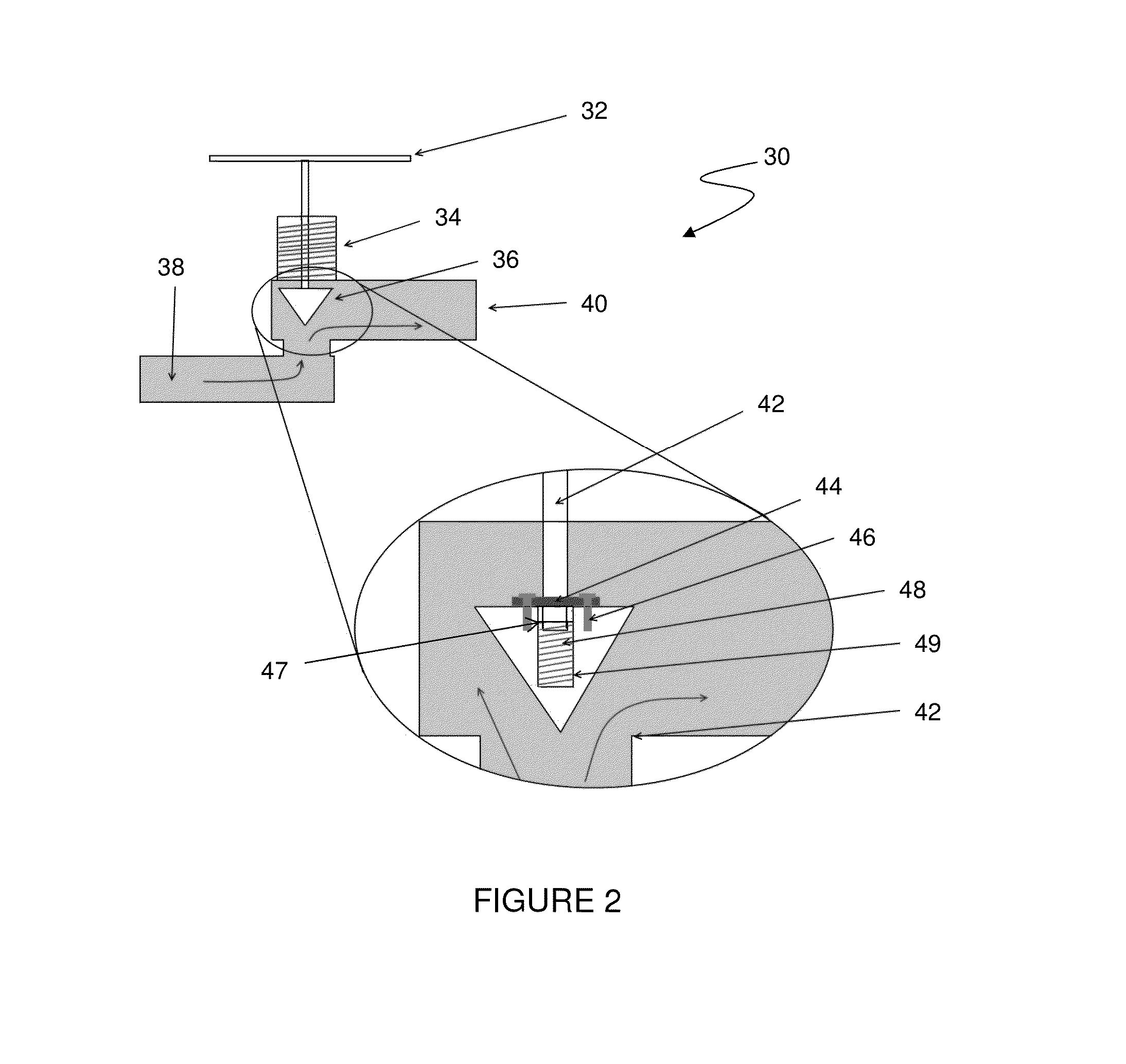Wearable external ventricular drain system
a technology of external ventricular drain and wearable, which is applied in the direction of wound drain, functional valve types, transportation and packaging, etc., can solve the problems of increased intracranial pressure, reduced patient safety, severe brain damage or death, etc., and achieve the effect of reducing the potential for patient harm
- Summary
- Abstract
- Description
- Claims
- Application Information
AI Technical Summary
Benefits of technology
Problems solved by technology
Method used
Image
Examples
first embodiment
[0022]The present invention encompasses at least three embodiments for valve 14, although one or more alternative valves may be employed instead. As seen in FIG. 2, valve 14 is an adjustable, spring-loaded needle valve. Needle valves are capable of sensitive adjustments and high degrees of attainable resolution. This high resolution is critical, since using the device necessitates operating within a small pressure range. A needle valve according to the present invention is preferably adjustable from 0-30 mmHg in increments of 1 mmHg. Needle valve 30 comprises an adjustment knob 32 having advancement threads 34 for advancing or retracting a needle in the flow path having a fluid inlet 38 and a fluid outlet 40. As further seen in FIG. 2, needle 36 is adapted to engage a needle seat 42 positioned between fluid inlet 38 and fluid outlet 40, thereby adjusting the amount of fluid that can flow from fluid inlet 38 to fluid outlet 40. When needle 36 is positioned far away from needle seat 4...
second embodiment
[0024]valve 14 comprises an orifice valve 50 that is adjustable both in diameter and length. The back pressure provided by an orifice is provided by both its diameter and its length according to the Hagen-Poiseuille equation:
ΔP=8μLQπr4
[0025]As seen in FIG. 3, a series of rotating cylinders 52, each having multiple orifices of varying diameters, are aligned along a common axis X-X. Orifices are preferably offset from the axis of rotation and positioned to align with a fluid pathway by a fluid input tube 56 to a fluid outlet 58. As seen in FIG. 4, each cylinder 52 has a small orifice 60 and large orifice 62 that may be selectively aligned along fluid pathway and configures to provide a certain back pressure according to the Hagen-Poiseuille equation. For example, aligning the small orifices 62 of four cylinders 52, each providing 1 mmHg back pressure, with the large orifices 62 of four remaining cylinders 52, will provide a total of 4 mmHg back pressure. Each cylinder 52 may be sealed...
third embodiment
[0026]In a third embodiment, valve 14 may comprise an array of orifices of various specific diameters and lengths that provide a range of back pressures according to the Hagen-Poiseuille equation. A moveable shutter that selectively exposes a predetermined single orifice or array of orifices may be used to allow a user to adjust the specific amount of back pressure for system 10.
PUM
 Login to View More
Login to View More Abstract
Description
Claims
Application Information
 Login to View More
Login to View More - R&D
- Intellectual Property
- Life Sciences
- Materials
- Tech Scout
- Unparalleled Data Quality
- Higher Quality Content
- 60% Fewer Hallucinations
Browse by: Latest US Patents, China's latest patents, Technical Efficacy Thesaurus, Application Domain, Technology Topic, Popular Technical Reports.
© 2025 PatSnap. All rights reserved.Legal|Privacy policy|Modern Slavery Act Transparency Statement|Sitemap|About US| Contact US: help@patsnap.com



